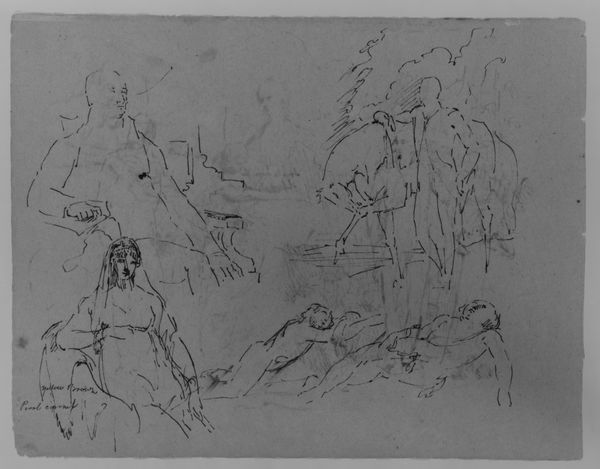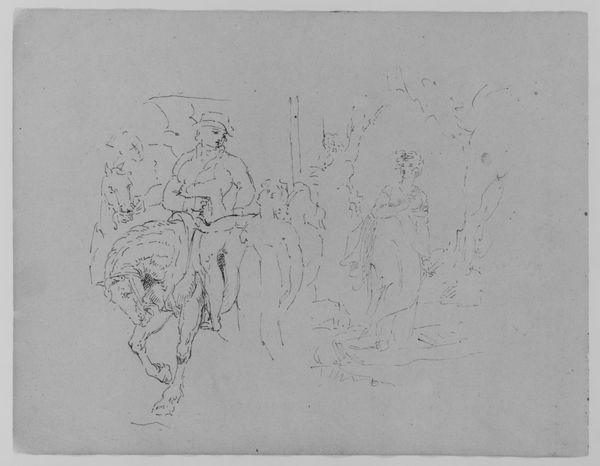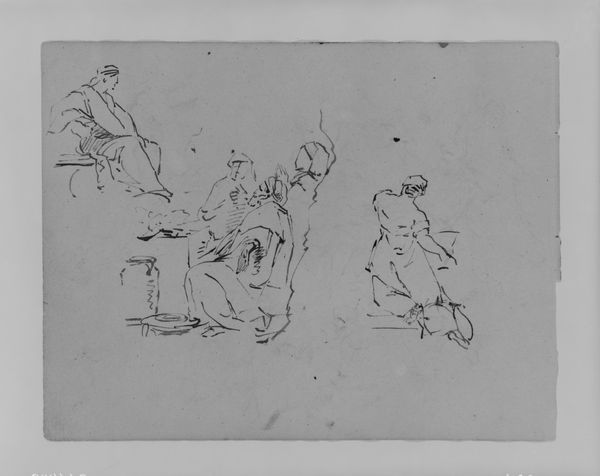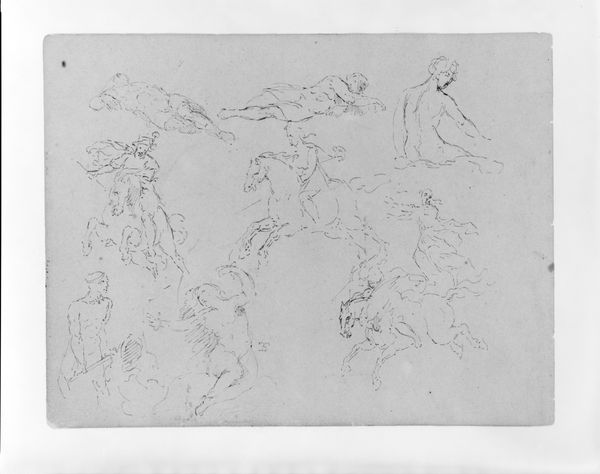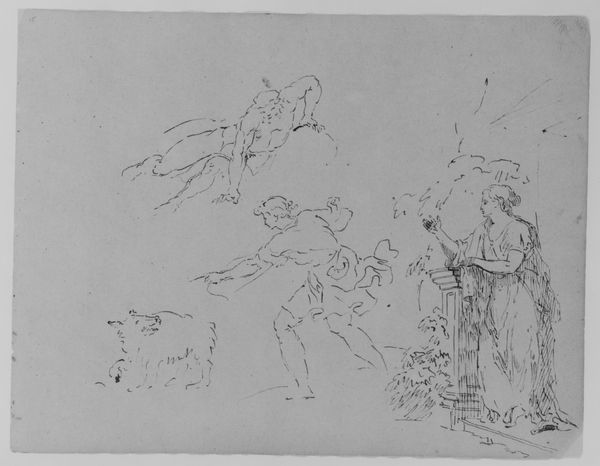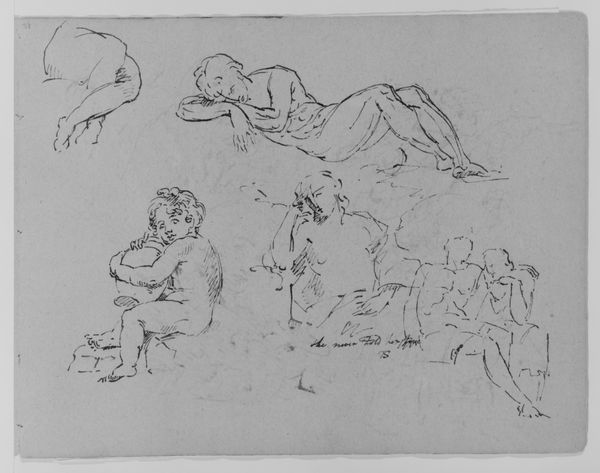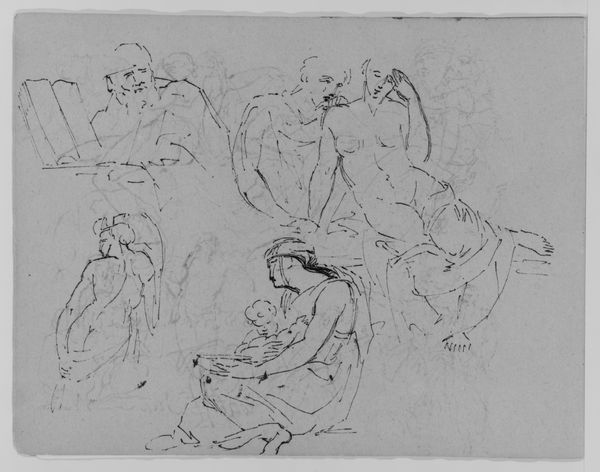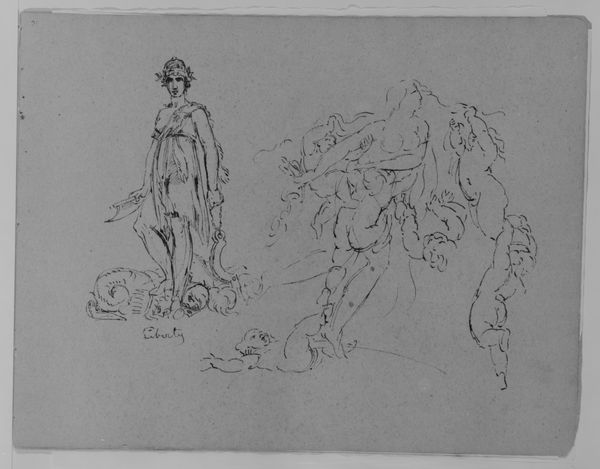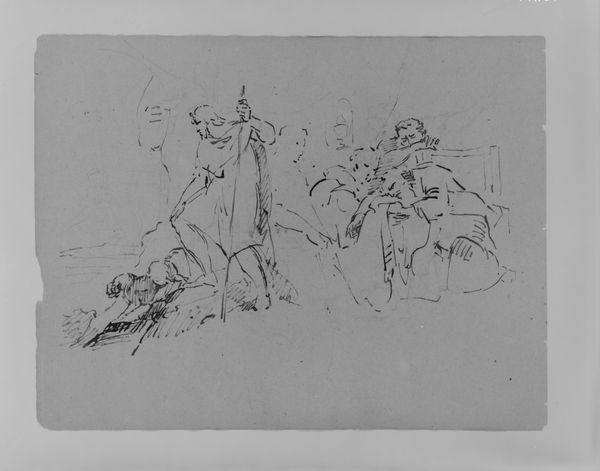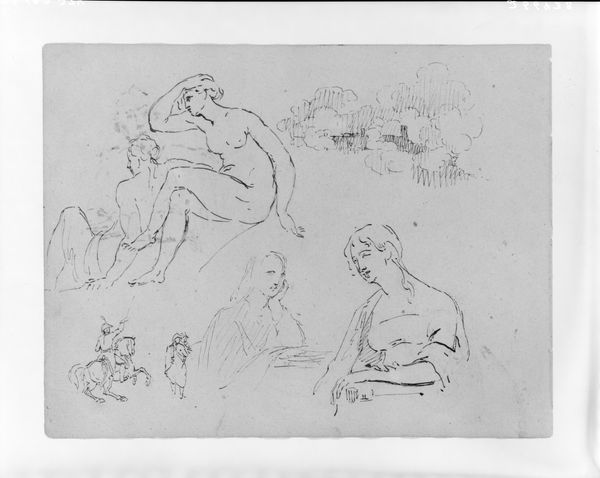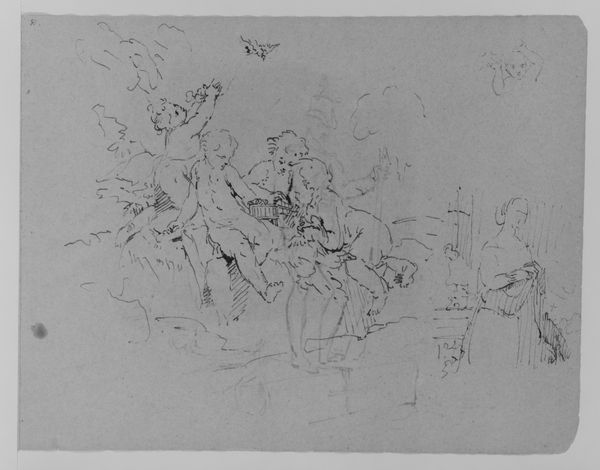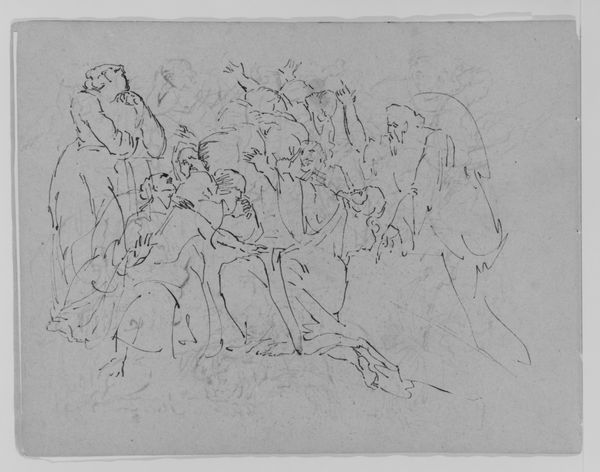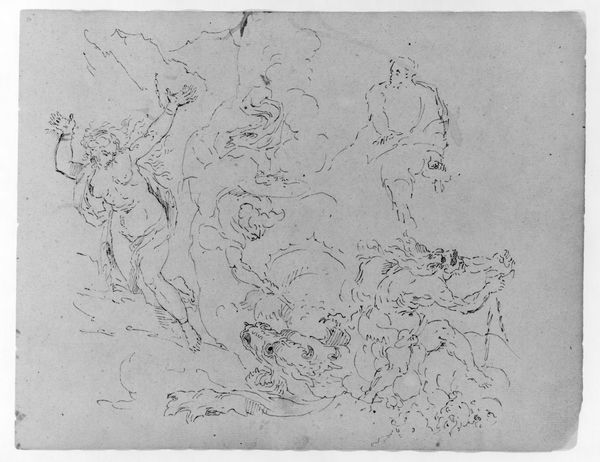
Lamentation (?); Mother and Child in Landscape; Penitent Magdalene; Seated Male at Table; Seated Female Holding a Letter (Batsheba, after Rembrandt) (from Sketchbook) 1810 - 1820
0:00
0:00
drawing, paper, ink
#
drawing
#
figuration
#
paper
#
ink
#
line
#
nude
Dimensions: 9 x 11 1/2 in. (22.9 x 29.2 cm)
Copyright: Public Domain
Editor: So, here we have a page from a sketchbook by Thomas Sully, created sometime between 1810 and 1820. It's called "Lamentation (?); Mother and Child in Landscape; Penitent Magdalene; Seated Male at Table; Seated Female Holding a Letter". It is an ink drawing on paper, and what strikes me is how many different figures Sully included, seemingly separate stories but on a single page. What connections do you see between them? Curator: That's a great observation. Each vignette, while seemingly distinct, resonates with familiar archetypes and iconographic traditions. Consider the 'Lamentation' and 'Penitent Magdalene' – both tap into powerful imagery of sorrow, repentance, and spiritual reflection, often rendered with a kind of body language. The pose, the drapery—these are not accidental choices but deliberate cues laden with cultural memory, echoing classical or biblical narratives. Editor: So you're saying that even though these are just quick sketches, they’re drawing on centuries of established visual language? Curator: Precisely. Even the "Seated Female Holding a Letter" potentially alludes to themes of longing, communication, or revelation – think of similar depictions of Bathsheba after Rembrandt, also mentioned in the title. Sully invites us to contemplate the psychological weight carried by these figures, these symbols. Editor: That's interesting! I hadn't considered the common threads of sorrow or contemplation running through each of these little scenes. Is that something a viewer at the time would also have picked up on? Curator: Absolutely. These visual shorthands would have been readily understood by Sully's contemporary audience, steeped in both classical and religious imagery. What do you think the 'Mother and Child in Landscape' scene might suggest? Editor: Perhaps the security of the bond of a mother with her child against the backdrop of a potentially challenging or unknown world? Curator: Yes, perhaps protection against the unknown, or the solace that family may bring against all external matters. Sully may be demonstrating his personal capability and breadth through referencing art from the ancient world, renaissance, and even his own contemporaries! Thank you, that gave me some good thoughts as well.
Comments
No comments
Be the first to comment and join the conversation on the ultimate creative platform.
